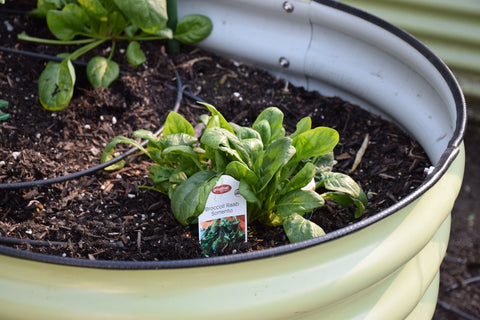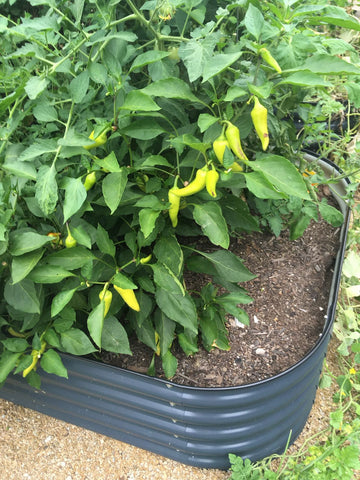Knowledge From Olle Garden Bed: How To Use Hydrogen Peroxide To Prevent Plant Powdery Mildew
If you are a fanatical gardener, you know the frustration of fighting against powdery mildew on plants. No matter how much time and energy you spend taking care of your garden, these tiny white spores are likely to quickly overtake it, leaving many gardeners helpless because their vegetables, flowers, indoor plants and shrubs all succumb to this infectious disease. But don't give up hope! Learn why hydrogen peroxide can prevent powdery mildew from occupying your precious property. Read here are some things that you should know when It comes to Olle Garden Beds!
Learn all the details needed to ensure that these pesky spores stay away from your favorite plants, including the precautions to be taken when using this method, and the step-by-step guide for its application.
First – what is powdery mildew?
Powdery mildew is a common fungal disease, which grows on the leaves, stems and other parts of plants and displays as white or gray fungal patches. Sometimes, it even spreads to the entire surface of the leaf.
This fungal infection is particularly harmful to flowering plants and vegetables, leading to their weakness and susceptibility to other diseases. If not controlled, powdery mildew will cause yellow and withered leaves, so please identify and treat as soon as possible.
Fortunately, there are some ways to prevent the spread of powdery mildew first! By taking proper care of and maintaining your garden or potted plants and some hydrogen peroxide (H2O2), you can keep the leaves healthy and energetic.
Step-by-step guide for the treatment of powdery mildew with hydrogen peroxide
Hydrogen peroxide is a good method to prevent and treat indoor plant powdery mildew. It works by killing and inhibiting the fungi that cause mold and preventing the formation of new spores. Hydrogen peroxide dissolves spores that may remain on plants, preventing future outbreaks before they occur.
Step 1 – Preparation of hydrogen peroxide solution
Preparation of solution is the first step to use hydrogen peroxide for your plant. To do this, mix 12 tablespoons of 3% hydrogen peroxide with 1 gallon of water. This will ensure that you dilute the solution and that it is safe for your plants. You can usually find 3% strength or medical grade hydrogen peroxide in pharmacies or supermarkets.
Step 2 – Apply the solution to your factory
After making hydrogen peroxide solution, it is time to apply it to your factory. Perform this operation in the morning or at night so that the solution has enough time to work before being exposed to direct sunlight. Harvest any fruits or vegetables before spraying.
Pick up the spray bottle of hydrogen peroxide solution and start spraying the leaves and stems of plants. Spray both sides of the leaves for maximum effect. You don't want to miss any scenic spots! After covering the plant surface, leave it alone when the solution completes its work.
If your plant has powdery mildew, please spray hydrogen peroxide solution every three days until the powdery mildew disappears.
Other techniques to fight powdery mildew
In addition to using hydrogen peroxide, you can also take other measures to prevent and treat powdery mildew on plants.
Provide sufficient air flow
Maximizing the airflow around plants is the key to preventing the spread of powdery mildew. The best way is to isolate the plants as much as possible so that the air can flow freely inside and around the plants.
This will reduce the humidity level in garden or potted plants, thus making it difficult for powdery mildew spores to settle and grow. In addition, sufficient air flow can also promote healthier growth by keeping the temperature too high and allowing the necessary oxygen to enter the soil.
Correct watering
Watering plants ensures that they stay healthy and thrive - but at the right time and in the right way. To prevent powdery mildew, please avoid watering at the hottest time of the day - when the temperature reaches the peak and the humidity rises.
Instead, choose the morning or evening with lower temperature and less moisture in the air. Top watering can also cause problems, so please avoid it as much as possible and focus on soaking your plants from below.
Trim infected area
If you notice signs of powdery mildew on some plants, please do not despair! Taking the right steps to trim the infected part will help to curb the spread of this annoying fungus and keep the plant healthy.
Before trimming, please wear gloves and masks to avoid inhaling spores. Carefully remove all affected leaves or stems from the plant and discard them in the trash can instead of the compost bin! After removing all visible signs of powdery mildew, clean and disinfect tools with bleach solution to avoid cross contamination.
Use store-bought fungicides
When dealing with powdery mildew in gardens or potted plants, fungicides are an effective solution. Before spraying, make sure you know how to use it correctly.
Always wear protective gloves when using irritating chemical products. In addition, although most local garden centers and stores can easily buy fungicides, you may need to carry out some research to ensure that you use the correct type for specific plants.
After selecting the appropriate product, please read all the instructions carefully before continuing to apply. Cover all surfaces of the plant, but be careful not to overuse it, because it will damage your plant.
Avoid spraying when it is going to rain. This will help ensure that the chemical works normally and will not be diluted due to sedimentation.
If you prefer to keep it more organic, you can use baking soda to solve your powdery mildew problem!
Goodbye, powdery mildew, hello, hydrogen peroxide
Hydrogen peroxide is an effective and mild method to prevent and treat garden powdery mildew. Taking care of plants is fun, but when fungi such as powdery mildew spread, the pressure will increase. Through positive measures such as hydrogen peroxide in the tool belt, you will better prevent and deal with powdery mildew!


